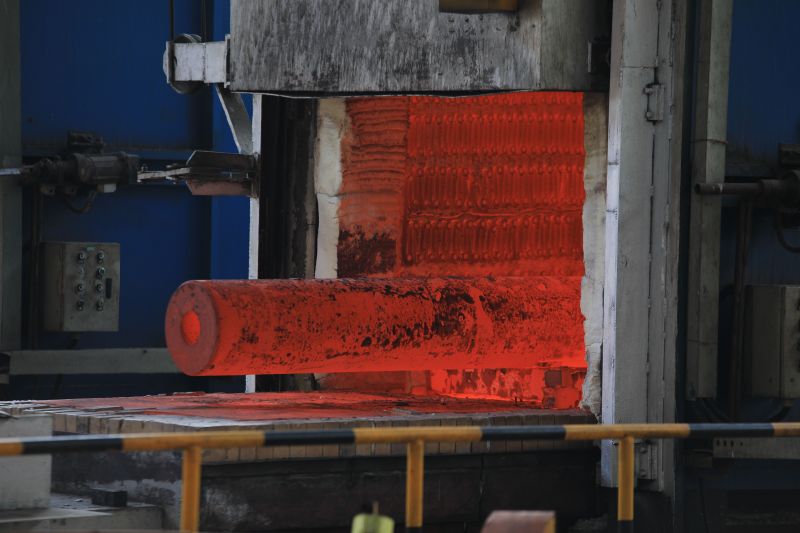Many mechanical parts are working under alternating and impact loads such as torsion and bending, and their surface layer bears higher stress than the core; In situations of friction, the surface layer is constantly worn out. Therefore, the requirement for strengthening the surface layer of forgings is put forward, which means that the surface has high strength, hardness and wear resistance.
Surface heat treatment of forgings part is a process that only applies heat treatment to the surface of the workpiece to change its structure and properties. Usually, the surface has high hardness and wear resistance, while the core still maintains enough plasticity and toughness. In production, steel with a certain composition is first selected to ensure that the mechanical properties of the core meet the requirements, and then surface heat treatment methods are applied to strengthen the surface layer to meet the performance requirements. Surface heat treatment is divided into two categories: surface quenching and surface chemical heat treatment.
Surface quenching of forgings parts. The surface quenching of forgings parts is a heat treatment method that rapidly heats the surface of the workpiece to the quenching temperature, then rapidly cools down, only allowing the surface layer to obtain the quenched structure, while the core still maintains the pre-quenched structure. Commonly used are induction heating surface quenching and flame heating surface quenching. Surface quenching is generally used for medium carbon steel and medium carbon alloy steel forgings.
Induction heating quenching uses the principle of electromagnetic induction to induce huge eddy currents on the surface of the workpiece through alternating current, causing the surface of the forging to be rapidly heated while the core is almost unheated.
The characteristics of induction heating surface quenching: after quenching, the martensite grains are refined, and the surface hardness is 2-3 HRC higher than that of ordinary quenching. There is a significant residual compressive stress on the surface layer, which helps to improve fatigue strength; Not prone to deformation and oxidative decarburization; Easy to achieve mechanization and automation, suitable for mass production. After induction heating quenching, in order to reduce quenching stress and brittleness, a low temperature tempering at 170-200 ℃ is required.
Flame heating surface quenching is a process method that uses the flame of oxygen acetylene gas combustion (up to 3100-3200°C) to quickly heat the surface of forgings above the phase change temperature, followed by quenching and cooling.
Immediately conduct low-temperature tempering after quenching, or use the internal waste heat of the forging to self-temper. This method can obtain a quenching depth of 2-6 mm, with simple equipment and low cost, suitable for single piece or small batch production.
OEM Customized Open Forging Part For Bit manufacturers and suppliers | WELONG (welongsc.com)
Post time: Sep-05-2023





